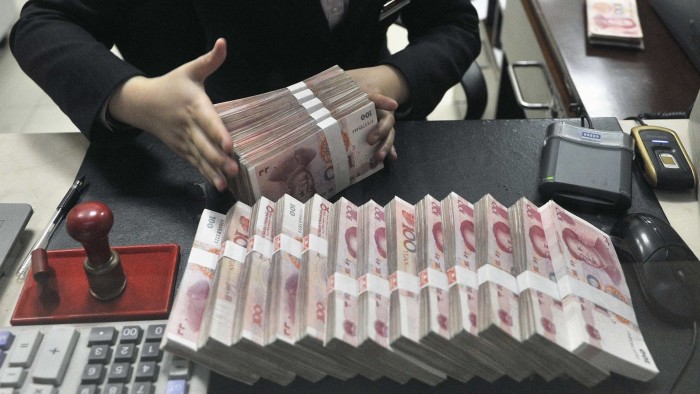China party mouthpiece echoes Soros’ debt fears


Roula Khalaf, Editor of the FT, selects her favourite stories in this weekly newsletter.
So maybe George Soros was on to something after all. On Monday the People’s Daily, the Chinese Communist party’s flagship newspaper, published a front-page interview with an “authoritative figure” who warned that the country’s soaring debt levels could lead to “systemic financial risks”.
The last time the People’s Daily made such a splash was in January, when its overseas edition took Mr Soros to task for allegedly shorting the renminbi.
As it happened, Mr Soros did not mention the renminbi but said he was bearish on Asian currencies and also worried about deflation and debt in China. More recently, the “man who broke the Bank of England” said China was at the top of a debt precipice comparable to the one the US tumbled off a decade ago.
The “authoritative figure” interviewed by the People’s Daily was even more quotable than Mr Soros on China’s dangerous debt level, currently at 237 per cent of gross domestic product and climbing.
“A tree cannot reach the sky,” the figure said. “Any mishandling [of the situation] will lead to systemic financial risks, negative economic growth and evaporate people’s savings. That’s deadly.”
Scary words, but there is comfort of sorts: that debt fears, most commonly aired by foreign investors and analysts, are reverberating in the corridors of power. To date, Zhou Xiaochuan has been a notable exception: the head of the People’s Bank of China emphasises the need to address corporate indebtedness in internal meetings, according to people familiar with the central bank’s deliberations.
The authoritative figure’s intended audience on Monday was almost certainly domestic, namely the more complacent government and party officials who complain privately about what they perceive as the international media’s unwillingness to “write a good story” about the Chinese economy. These officials were taken aback when, after months of turmoil on China’s equity and currency markets, the respectable first-quarter economic growth figure they delivered in April, of 6.7 per cent, was overshadowed by the debt debate.
But while the anonymous source’s warnings about the dangers of debt were new, many of his other comments were not.
The official, for example, emphasised the need for “supply side” reforms, which are supposed to ensure that the Chinese economy produces more of what consumers want (education, healthcare and other services) and less of what they do not (coal, steel and pollution). In another People’s Daily broadside on Tuesday, in the form of a long excerpt from an internal speech given in January, President Xi Jinping made clear that his vision of supply-side reform with Chinese characteristics would be less harsh than the “get on yer bike” variety peddled by Margaret Thatcher and Ronald Reagan in the 1980s in the UK and US respectively.
The official also warned that the trajectory of China’s economic growth, which fell sharply from an annual figure of 12 per cent in 2010 to 8 per cent in 2013 and has since dribbled slowly downwards, will continue to be “L-shaped”.
The supply-side mantra and L-shaped growth warning were both emphasised in the wake of the party’s annual Central Economic Work Conference, held in December. According to the conference’s communiqué, average economic growth would be 6.5 per cent until 2020 — in other words, no V or even U-shaped acceleration back to the boom-time growth of old.
There is, however, a fundamental contradiction in this otherwise sobering analysis that the Chinese government has still not officially acknowledged. If Beijing really is going to let heavy industrial companies go under, refrain from monetary stimulus and now — as Monday’s article in the People’s Daily more or less promised — finally address the debt issue, how could it avoid a more severe slowdown to growth, say, of 3-4 per cent?
An increasing number of analysts now believe a marked deceleration in short-term economic growth, while painful, will be inevitable if the Chinese government really does tackle the debt issue head-on. The alternative to a full-on implosion, of the sort experienced in Asia in 1997-98 and globally in 2008, is hardly beguiling either: think Japan’s lost decade followed by years of economic stagnation.
In his comments that so irked the People’s Daily in January, Mr Soros alluded to this dilemma when he predicted a hard landing for the Chinese economy. But for the time being, that is one scenario that neither the party nor its flagship newspaper are ready to acknowledge. No one wants to have to tell Mr Xi that the 6.5 per cent economic growth rate that he ordered up just five months ago could come with such a high price.
Comments